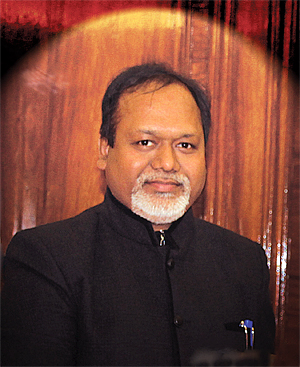INDIAN ARMED FORCES CHIEFS ON OUR RELENTLESS AND FOCUSED PUBLISHING EFFORTS

The insightful articles, inspiring narrations and analytical perspectives presented by the Editorial Team, establish an alluring connect with the reader. My compliments and best wishes to SP Guide Publications.

"Over the past 60 years, the growth of SP Guide Publications has mirrored the rising stature of Indian Navy. Its well-researched and informative magazines on Defence and Aerospace sector have served to shape an educated opinion of our military personnel, policy makers and the public alike. I wish SP's Publication team continued success, fair winds and following seas in all future endeavour!"

Since, its inception in 1964, SP Guide Publications has consistently demonstrated commitment to high-quality journalism in the aerospace and defence sectors, earning a well-deserved reputation as Asia's largest media house in this domain. I wish SP Guide Publications continued success in its pursuit of excellence.
A word from Editor-in-Chief

Although the contribution of the aviation industry towards climate change is relatively much lower than other forms of transportation, the industry is leaving no stone unturned to make their aero-engines far more fuel-efficient leading to lower emissions and are working towards the objective of a carbon-neutral growth by 2020
It was reported that during the International Air Show at Paris in June this year, Chairman and CEO of Dassault Aviation of France Eric Trappier along with other senior functionaries of the company and Dr R.K. Tyagi, Chairman of the Indian aerospace major the Hindustan Aeronautics Limited (HAL) accompanied by his team, met and discussed issues related to the multibillion-dollar mega deal for the 126 medium multi-role combat aircraft (MMRCA) for the Indian Air Force (IAF) for which the French Rafale was shortlisted end January 2012 as the preferred platform.
It is understood that progress of the other ongoing projects was also reviewed and hopefully the differences over the licence manufacture of the Rafale and issues related to delivery schedule and quality assurance would have been resolved. However, during the visit of the French Minister of Defence Jean-Yves Le Drian to Delhi in the last week of July this year, there was no clear indication from the Indian side about the time frame for the conclusion of the ongoing contract negotiations on the MMRCA tender. The big danger is that unless the contract is signed soon enough or at least before May 2014, the deal could run into a major stumbling block by way of the general elections in India due next year. This situation would be of concern not only for the French aerospace major Dassault Aviation that is banking on the Indian order to keep the production line of the Rafale open, but also for the IAF that urgently needs to arrest further erosion of its combat capability especially in the context of the rapidly deteriorating security situation in the country with both the neighbours adopting increasingly hostile posture. Undoubtedly, there is an imperative need to hasten the finalisation of the MMRCA contract as the Rafale will have a role that would be of critical importance to national security.
China that is clearly emerging as a global power is also forging ahead in the race for exploitation of space for military purposes. In this issue, Air Marshal Anil Chopra reviews activities of the major space-faring nations in the world towards the “weaponisation” of space, despite international treaties restraining such effort. Israel is a nation so small, but stands tall in the global aerospace industry. In this issue, Sucheta Das Mohapatra describes in detail the phenomenal capability and expanse of the Israel aerospace industry that competes on equal footing with the most powerful aerospace industrial powers of the world. Air Marshal Chopra also focuses on the debate over manned vs unmanned platforms for the future. He concludes rightly that despite the strides in the regime of unmanned platforms, the end of manned platforms is not yet in sight.
In the civil aviation segment, R. Chandrakanth takes a look at the measures business jet manufacturers are adopting to reduce the adverse impact of business aviation on the environment. Although the contribution of the aviation industry towards climate change is relatively much lower than other forms of transportation, the industry is leaving no stone unturned to make their aero-engines far more fuel-efficient leading to lower emissions and are working towards the objective of a carbonneutral growth by 2020. Writing from Bengaluru, A.K. Sachdev has evaluated the state of the Regional Aviation in the country. The author concludes that “Indian civil aviation can rejoice over the fact that the establishment has finally turned its attention to promoting regional aviation.” He believes that regional aviation will prosper when the level of competition on metro routes get replicated on non-metro routes as well.
As India gears up to celebrate its 67th Independence Day on August 15, we invite our Indian readers to be a part of the celebrations.





